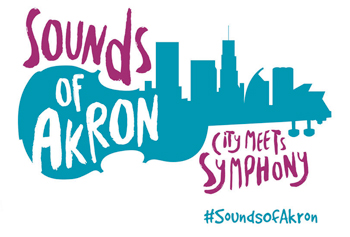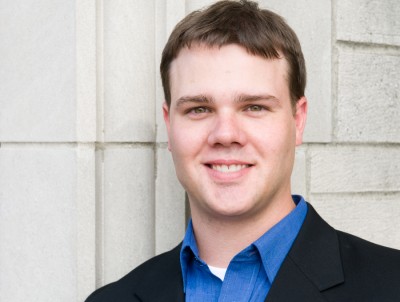by Mike Telin

“This project is cool,” an enthusiastic Wilkins said during a recent telephone conversation. “It really is verging on performance art in that it’s breaking down the fourth wall in making the community part of the creative process. In a way, asking what Akron sounds like is similar to asking who you are — from a sonic point of view.” Wilkins encourages everyone to download the iOS app or the Android app and upload their recordings to Sounds of Akron. On Sunday, October 11 the Symphony invites area residents to collect sounds during an outing at the Akron Zoo. “People should know that we still want submissions,” Wilkins said, adding, “they should send us anything that they think is interesting.”
“One of the things I like about the Akron Symphony is that Christopher Wilkins has a proactive approach to community collaboration and commits to those collaborations because they are the right thing to do,” Akron Symphony executive director Paul Jarrett said. “Many times we’ve embarked on community projects and hoped that the funders would follow.”
Luckily for the Symphony, this time it was the funder who initiated the discussion about the Sounds of Akron project. “We’ve had a very good relationship with the Knight Foundation, and the now-retired Dennis Scholl contacted us about a year ago, saying that he had seen the innovative composer and MIT Media Lab professor Tod Machover put together this project in Edinburgh, Scotland, Perth, Australia, and Toronto, and he was interested in bringing it to some of the Knight cities. Funding had already been provided for the Detroit Symphony, and Akron is the second city.”
Due to time restraints, Machover was not available to take on the Akron project. However, Jarrett has been completely impressed with Clint Needham. “He’s been amazing to work with. He’s very creative and has the right attitude, and the right musical voice for the community.”

Christopher Wilkins
What has been the reaction from the Akron community? “It’s been very good. There’s been a lot of support for the project, and we’ve been able to engage more collaborative partners them we ever have. We hosted a day on the Cuyahoga Valley Scenic Railway, where Clint spent a day on the train going through the cars, talking to people, and having them download the app. The Symphony has never had a partnership with the railway, and because of this, we now have a great relationship with them.” Jarrett added that the project has also opened doors to establishing relationships with other groups as well. “We hosted a day at the Rubber Ducks Ballpark — ‘Sounds of the Ballpark.’”
Christopher Wilkins said that he was interested in bringing Tod Machover’s project to Akron because it completely fits with Symphony’s mission to create collaborations where community participation is paramount and to be as inclusive as possible. “Tod is interested in bringing his and other composers’ creative work to the larger community. He’s also interested in the intersection between technology and art — that’s been the basis of his career. The MIT Media Lab has made an enormous contribution to the arts, from video and film to his opera of the future. And a side benefit for both Clint and me is that we’ve had the opportunity to spend time in the Lab.”
Although this is the first time that Tod Machover will not be the composer for the project, Wilkins asked if he would be the godfather to it. “Tod and I went over dozens of possible composers. We had quite a wish list.”
Wilkins said they were looking for a composer who is skilled at writing for orchestra, has an interest in technology, and has the skill to make sense of that technology.
“I also wanted a composer who had stylistic versatility. One of the things that is distinctive about Northeast Ohio is the range of musical traditions that we have. In addition to the incredible level of the area’s classical music scene, there’s also the indie rock scene, the gospel music scene, the jazz scene, the experimental and electronic music scene, and the amateur music makers. There’s a whole range of music here. Clint may or may not decide to include references to specific groups like The Black Keys or Chrissie Hynde, but my guess is that they might come up, and it’s nice that Clint is quite comfortable in the whole spectrum between classical and popular music.”

Clint Needham
Wilkins and Machover were also looking for someone who has a good public persona — who’s good in front of a group and can win over seniors, children, and everyone in between. “We went through a long list of composers, and at the end I told Tod that a great thing about Clint, who really was the last man standing at that point, is that he lives in the area and teaches at Baldwin Wallace. Being local was not part of the criteria. In fact, it never occurred to Tod that it was important because he’s done this project all over the world and he’s never lived in any of the cities. But I think it is a huge asset. Clint has been at our summer concerts, and he’s able to attend a lot of community events just because he is so close by. He’s been a wonderful collaborator, and I know he will make something great out of whatever he gets.”
Click here to listen to Clint Needham talk about the Sounds of Akron project.
Published on ClevelandClassical.com September 5, 2015.
Click here for a printable copy of this article



